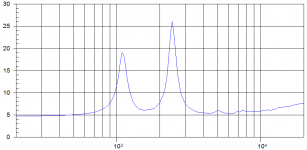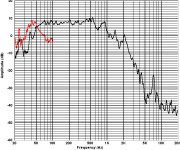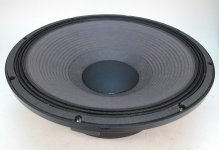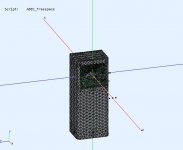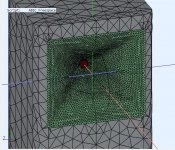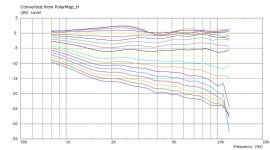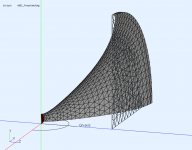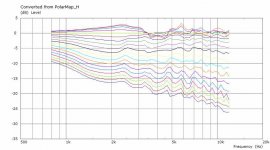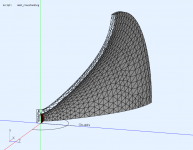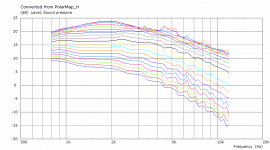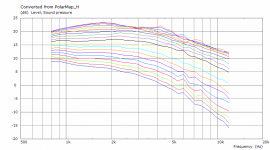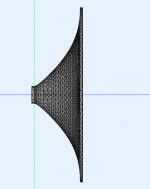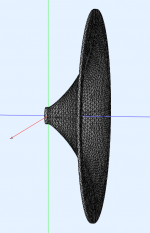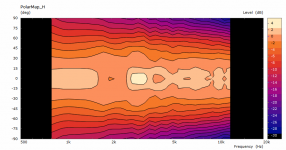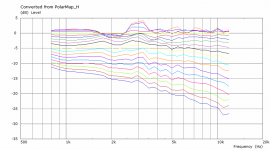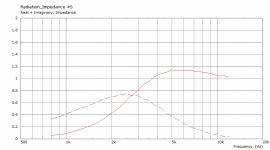So ok because the driver is strong enough (mechanical) for a 700 hz in hifi use : surmise less than 90 db average very confortble & most reccordings :7 to 8 db more average dynamics raises max? so less than 100 dB at highest peaks for most hifists at home but rare good classical reccordings that don't have loudness mixing - and in relation to the average spl 90 db listening level, most reccordings, most dacs (amps) noise floor ! -
Is it a good reading of your input, please - sorry for the noob input level - pun-here-? Often difficult to read correctly the datasheets for a simple enthusiast...
Is it a good reading of your input, please - sorry for the noob input level - pun-here-? Often difficult to read correctly the datasheets for a simple enthusiast...
Last edited:
Slightly off-topic - I've just ordered new Faitals HF1440 for €225/piece. Hope they are worth it! 🙂
Nice!
I'm sure they are worth it.
You've ordered here, I assume?
They say 700 hz but watching the impedance curve, 700 hz is 40 ohms... are they not a little bit optimist and should have said 900/1000 hz cut-off for this driver😕
I wouldn't hesitate to use this driver from 600 Hz and 450-500 Hz is probably ok, as is for it's smaller brother, the HF200.
The HF1440 has a 3.4" diaphragm compared to 2.91" of the HF200.
Impedance plots are a bad indicator of compression driver capabilities.
Some people use this 1", crossed at 800 Hz for livesound applications at very high SPLs:
Attachments
Last edited:
... So better the HF1440 so to speak about the trebles and low end in hifi use ?
Ah, 500 cm width horn for them ?
Edit : 2 ways possible with a low Le bass driver with circa 35 Fs driver, circa BR 45 hz tuning, rephrased such low pass/compression drivers in the right horn are XO proof with a 15" in the cut-off area : let be crazy : 500 to 700 cut-off?
Ah, 500 cm width horn for them ?
Edit : 2 ways possible with a low Le bass driver with circa 35 Fs driver, circa BR 45 hz tuning, rephrased such low pass/compression drivers in the right horn are XO proof with a 15" in the cut-off area : let be crazy : 500 to 700 cut-off?
Last edited:
A bit of a rookie question...why be worried about impedance, even down to 500Hz?
That's correct, I was mostly thinking about excursion. Impedance is virtually irrelevant.
how is it working between the impedance top peak and its lower upper feet : is there not an acoustical short-cut here created by the driver resonance materialised in the impedance peak, so spl loss ?
Or it's irrelevant because we want to use such datas with low mechanichal constraint -hifi use- i.e. the amp can manage it as far we can deal with distorsion and if X-mech is not reached?
Or it's irrelevant because we want to use such datas with low mechanichal constraint -hifi use- i.e. the amp can manage it as far we can deal with distorsion and if X-mech is not reached?
Edit : 2 ways possible with a low Le bass driver with circa 35 Fs driver, circa BR 45 hz tuning, rephrased such low pass/compression drivers in the right horn are XO proof with a 15" in the cut-off area : let be crazy : 500 to 700 cut-off?
That's what I am focusing on.
The HF1440 combined with either 15PR400, 15FH500, 15FH510, or 15FH520 are proper ingredients.
Beyma offers similar drivers.
I'm currently looking at subwoofer drivers with a smooth roll-off.
Some say you need a curvilinear cone for mid-range reproduction rather than a straight one, common with subwoofer drivers.
I'll leave it at this, before I drift off-topic.
Last edited:
Very fast : seems most of 15" Beyma have stifer cut-off below 1 hz...at least often ! Instinct which has nothing to see with knowledge says to me the woofer should be a little horned both to better tmatch the horn profile, match time horizontal starting point around cut-off while with the bafle step & all I don't know. My feeling it should has a the lowest Le/1 khz and a solid amp to control it in order to try to match the cd/horn... Faital 15HF250 seems to be stronger than the 15pr400 while having a worsr Le. Some says a good 15" EV with higher Fs and worse datasheet is more lively and better sounding...  ...
...
I believe to remember Earl G was using very stiff and heavy cone but nuclear motor (high BL)... but eventually in the Suma with multiple distributed sub if the cut-off was too high in the Suma big cabinet if very huge rooms?!
Ok, off-topic, let- you guys focus on the horn shape + cd combo, already hard to follow for me...
 ...
...I believe to remember Earl G was using very stiff and heavy cone but nuclear motor (high BL)... but eventually in the Suma with multiple distributed sub if the cut-off was too high in the Suma big cabinet if very huge rooms?!
Ok, off-topic, let- you guys focus on the horn shape + cd combo, already hard to follow for me...
Regarding woofers, it's all about the frequency response in the end, which is normally no issue if used only up to 500 - 700 Hz. So it boils down to basic directivity and the total Q at resonance (may be important for passive crossovers, irrelevant for active). Efficiency and power dissipation capability is more than good enough with these drivers. That's about it.
Last edited:
This one with 4" VC would just make it.
It's a kind of JBL 2226H clone.
Raw response, except for the low pass.
It's a kind of JBL 2226H clone.
Raw response, except for the low pass.
Attachments
Last edited:
mabat,
if i'm not mistaken currently the only supported shape for throat entrance is circular, right?
are you planning on adding support for a rectangular shape?
it would be great to be able to design for planar drivers, AMTs, ribbon tweeters, etc.
if i'm not mistaken currently the only supported shape for throat entrance is circular, right?
are you planning on adding support for a rectangular shape?
it would be great to be able to design for planar drivers, AMTs, ribbon tweeters, etc.
So, here is a comparison of a flat and "fully modeled" rear side of a free standing waveguide. Axisymmetric, ⌀300 x 100 mm.
Flat rear side:
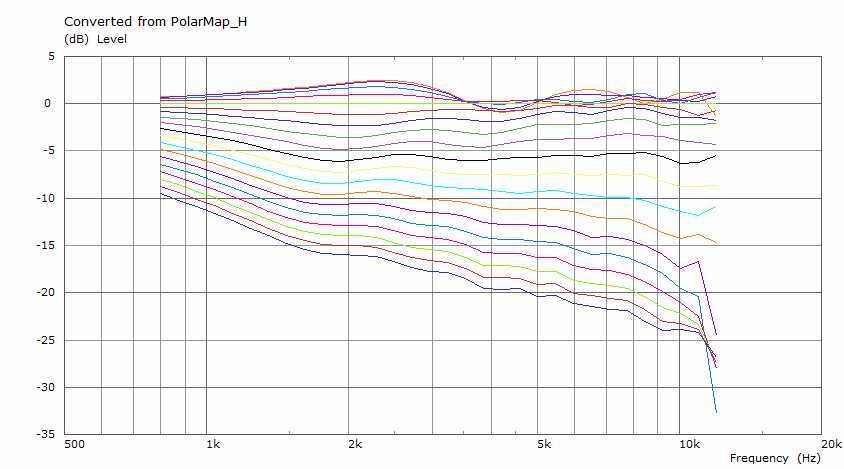
Fully modeled rear side:

Flat rear side:
Fully modeled rear side:
Attachments
That's correct. No other plans at the moment.mabat,
if i'm not mistaken currently the only supported shape for throat entrance is circular, right?
So, here is a comparison of a flat and "fully modeled" rear side of a free standing waveguide. Axisymmetric, ⌀300 x 100 mm.
"Flat" implies the horn mouth without anything behind it?
Last edited:
A bigger still - ⌀360 mm (q from 0.995 to 0.999). Now it would be helpful being able to measure the real thing. Although noticeably smoother, there are still apparent some high Q resonances and I wonder how real they are.
The last two examples are for a modeled rear side.

The last two examples are for a modeled rear side.
Attachments
Thanks, that explanation somehow eluded me.
A bigger still - ⌀360 mm (q from 0.995 to 0.999). Now it would be helpful being able to measure the real thing. Although noticeably smoother, there are still apparent some high Q resonances and I wonder how real they are.
The last two examples are for a modeled rear side.
Perhaps ⌀450 mm leads to a further reduction?
It's not that better. Obviously, the axial symmetry is still detrimental to axial response.
Now the interesting part will be to find a way how to make it better still, without losing the directivity too much.

Now the interesting part will be to find a way how to make it better still, without losing the directivity too much.
Attachments
- Home
- Loudspeakers
- Multi-Way
- Acoustic Horn Design – The Easy Way (Ath4)
